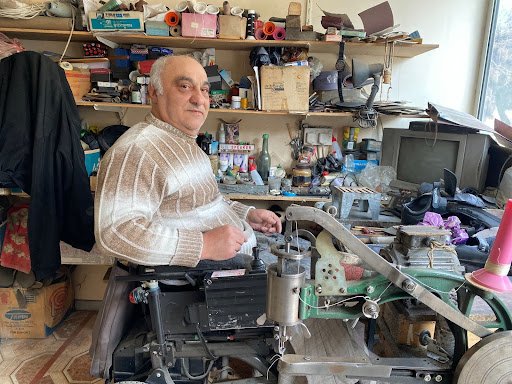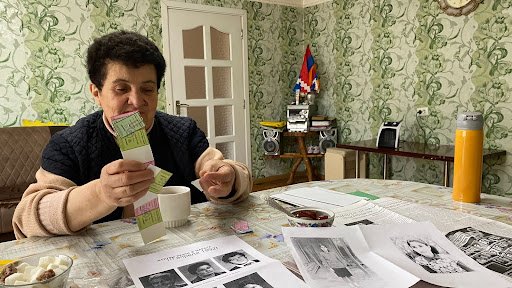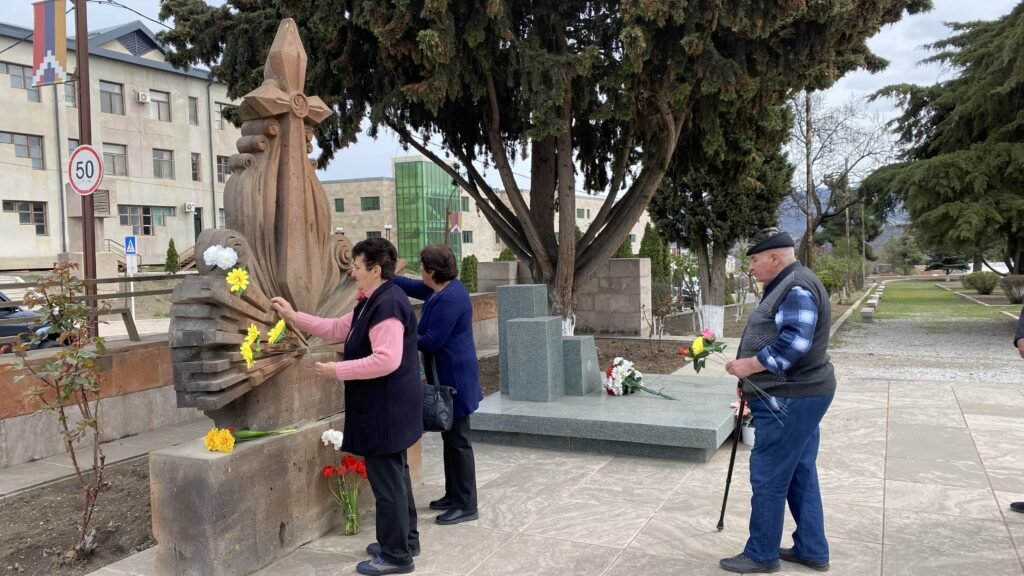
“Maragha was a beautiful and prosperous town, with neat houses and vegetable gardens attached to them, clean streets, several schools and kindergartens. It was the place of our happiness,” recalled 68-year-old Zhanna Petrosyan, a survivor of the Maragha massacre.
On April 10, 1992, Azerbaijani forces invaded, destroyed and set fire to the town. Its civilians were tortured and burned to death; some were captured and taken to unknown locations. About 118 people, mostly elderly, disabled, women and children, remained in the town. Many of them were mercilessly killed by Azeri soldiers. More than 50 people, including 30 women, died. “It was truly like a contemporary Golgotha many times over,” described Baroness Caroline Cox, then deputy speaker of the House of Lords, who visited Maragha the day after the mass murders.
The deadly attack on Maragha was not due to military necessity; rather it was aimed at the destruction of its civilian population, as was done from 1988-1992 in Sumgait, Baku, Kirovabad and other settlements of Azerbaijan, as well as in the villages of Shahumyan in northern Artsakh.
Maragha was an urban settlement in the Martakert region and was considered the “northern gate” of the Nagorno-Karabakh Autonomous Oblast. The town was founded in 1828 by Armenians who emigrated from the Persian city of Maragha. The inhabitants were engaged in viticulture, vegetable and grain cultivation and animal husbandry. There was a factory for the preliminary processing of grapes, a household service plant and a branch of the zonal experimental station of Artsakh. It had two secondary schools, three libraries, a cultural center, a communication department, a hospital and a kindergarten.
Petrosyan, who worked at the local post office, remembers that day with horror. It was more difficult for her, because at the time of the actual massacres, she was at a hospital in Martakert taking care of her wounded husband. Her three young children were in the village with her in-laws. “When I found out what was happening, I somehow reached the village without telling my husband, maddened with the thought of what could happen to my children.”
What Petrosyan vividly describes is shocking even today: the beheading of women and elderly, tortured bodies and the smell of blood.
“They beheaded our neighbor Borik Vardanyan and played football with his head in the center of the village. We recognized him from his shoes. They killed school director Ervand Avagimyan and his wife Tamara in their home. They did not spare their son Alik, who returned to the village hoping to save his parents’ lives.” Another fellow villager Haykaz Soghomonian’s head was cut off; they put his head on the table and had dinner like animals. “They threw Mrs. Zabela on the road in the middle of the village and drove the tank over her body. The burned bodies of Mr. Ruben and his wife were near the fence,” described Petrosyan.
She remembers biology teacher Alvina Baghdasaryan with special reverence and pain. “When Alvina was captured, she called on the villagers gathered near her house not to despair even before death. The beating, the chains, the red-hot iron did not bring her down in any way, and when the Azerbaijanis in the prison demanded that she say that Maragha is Azerbaijan, she refused. To this day, Alvina’s fate is unknown. She was an example of a real heroic woman with her bravery, courage and strength,” says Petrosyan.
A few days later, after the self-defense forces of Artsakh liberated the village, the villagers went back to bury the bodies.
“Villagers dug a big hole in front of the school and wrapped the corpses in blankets for mass graves, not even knowing everyone’s names because the tortured bodies were unrecognizable,” says Petrosyan.
The next three decades were difficult. Homeless and on the run from death, life for Petrosyan and her family was hard. She was the primary caretaker of her children, her parents and her disabled husband, who spent months in hospitals across Yerevan.
After living in a cabin in Gyumri for several years, Petrosyan and her family decided to return to their homeland. They lived in a rehabilitation center in Stepanakert and then in an abandoned store in the village until they finally got an apartment in Stepanakert with the help of benevolent people.

In Yerevan, her husband Edik Abrahamyan recovered and learned the craft of shoemaking to support his family. Abrahamyan doesn’t want to remember what happened 30 years ago; they are “the most painful episodes of his life.” “I left my youth, the happiest and most abundant days of my life in Maragha,” he says. “When I was injured in the spine and then the village was massacred, I thought that everything was over for me.”
Life’s difficulties did not stop him from being confined to a wheelchair all his life. Although he never imagined that he would one day make shoes, today he loves his job. All residents of Stepanakert’s Manukyan Street know him well and trust Abrahamyan to repair their shoes.
While the current blockade has left him without a replacement battery for his electric wheelchair and accessories for his shoe repair business, he has not lost his optimism. He proudly talks about his children’s successes, that they were able to provide for their education working tirelessly at modest jobs. His eldest son became a doctor. His youngest son became a military officer, and his daughter became a telecom engineer. Edik’s seven grandchildren bring him the most happiness; he believes he has overcome all the misfortunes of fate.
As a result of the 44-day war, Abrahamyan and Petrosyan, as well as other residents of Maragha, also lost New Maragha, which was built after the first Karabakh war.
As Artsakh remains under blockade and the threat of genocide hangs over the entire population of Artsakh, Petrosyan doesn’t want to give up. Food and supply vouchers from the government are scattered across her dining room table; she cannot even buy food with these vouchers due to the lack of goods. She says her heart shattered when she saw her young grandchild, hungry for fresh fruit, gnawing instead on toy fruits.

The purpose of the Maragha massacre was to break the spirit of the struggle of Artsakh Armenians through intimidation, ethnic cleansing and depopulation efforts. Today, Azerbaijan is carrying out the same policy while cutting off 120,000 Artsakh citizens from Armenia and the outside world, causing unbearable conditions and depriving indigenous Armenians of their opportunity to live peacefully in their homeland.
Still, Petrosyan refuses to leave Artsakh. “Where should I go? There is no better place in the world than your home, your land.” Then she added, “Even if a few families stay here, one of them will be our family. My children will take care of the country with their work, and my husband and I will take care of our grandchildren.”

The memorial stone dedicated to the victims of Maragha was relocated from New Maragha to the Stepanakert Memorial Complex after the 2020 Artsakh War, where today Petrosyan and other survivors of the Maragha massacre laid flowers in memory of the victims.




Be the first to comment